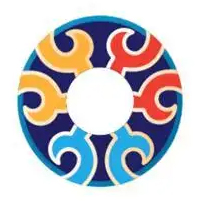Cloisonné and Related Techniques of Production
In the Chinese language textbooks we used to study, there was an article written by Mr. Ye Shengtao about the production of Cloisonné. The article detailed the six-step process of Cloisonné production. Today, let's expand a bit on Cloisonné and its related content.
The origin and development of Cloisonné
Cloisonné is one of China's famous metal crafts. During the Jingtai period of the Ming Dynasty (1450-1457), this production technique reached its peak, creating exquisite crafts. At that time, the varieties of Cloisonné included bottles, trays, bowls, furnaces, round boxes, incense burners, etc., and later there were appreciation items like tripods. Because the glaze color was mostly blue, later generations called this kind of craft 'Cloisonné'.
Today, when we mention Cloisonné, we refer to 'copper wire inlaid enamel' made on a copper base. Because gold was too expensive, Cloisonné made with a gold base was exclusively for the personal use of the emperor, so copper became the preferred material for making Cloisonné. 'Enamel' here is a transliteration of the ancient Chinese word, and 'enamel technique' refers to the technique of adding glaze to a metal base. Nowadays, when we mention 'enamel', it usually refers to Cloisonné.
The production technique of Cloisonné
In fact, there are multiple methods for making cloisonné, and wire painting enamel is just one of them. The wire painting technique is a crucial process in the making of cloisonné. It is one of the traditional techniques of ancient Chinese metalwork, where precious metals like gold and silver are pulled into thin flat wires, bent and twisted according to the pattern of the design, and then attached to the metal object.
In the early 1970s, based on the technique of wire painting enamel on flat metal base, artists invented wire painting enamel on wooden base. This is now known as 'cloisonné art', also known as cloisonné decorative painting, cloisonné wire painting enamel, or cloisonné sand painting. This type of art draws inspiration from the traditional cloisonné production techniques of wire painting and dotting with blue enamel, using a wooden board as the base and aluminum oxide as the wire material, without the need for firing. Initially, enamel glaze used in cloisonné was expensive and costly, but since 2005, it has been replaced with colored fine sand.
Crafts related to cloisonné
As an exotic item, the art of cloisonné was first introduced to China from Europe and reached its peak during the Jingtai period of the Ming Dynasty. Later, with the support of Emperor Kangxi in the Qing Dynasty, it took several decades to study and develop the art of enamel painting. In addition to cloisonné, Japan's cloisonné also received influences from the technique of cloisonné and surpassed China in its development. Today, the art of cloisonné has evolved from flat metal bases to wooden bases.
By understanding these crafts related to cloisonné and combining them with our own art of paper decoration, which is also an exotic item, I believe we can learn and gain insights from them.

